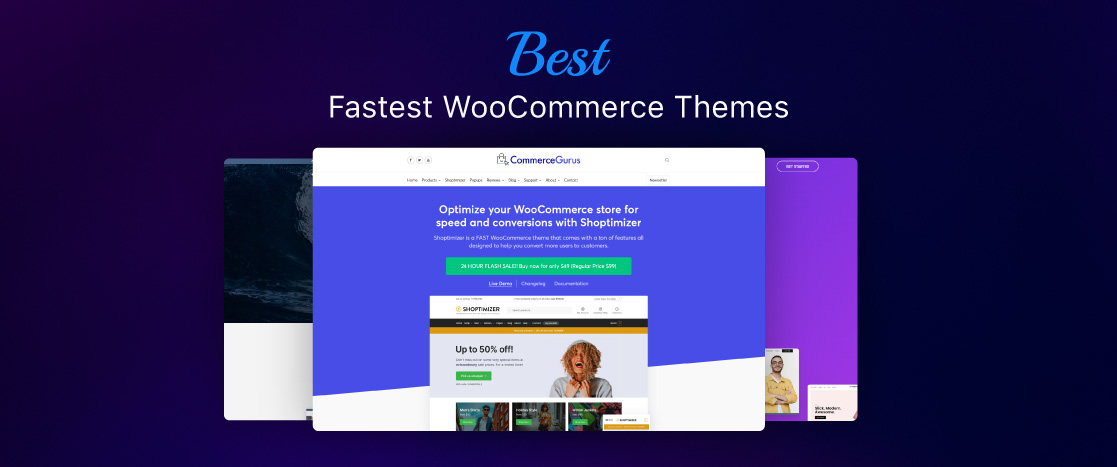
Mastering Ecommerce Product Images: Best Practices for Boosting Sales
- Why Are Good Product Images So Important?
- The Role of High-Quality Product Images
- Essential Image Types for Ecommerce
- Image Quality: Resolution and Formats
- Consistency and Branding
- Image Optimization for Speed and SEO
- Testing and Analyzing Image Performance
- Avoid Adding Too Much Text to Your Product Images
- Challenges with SEO and Accessibility
- How to Effectively Use Text on Product Images
- Conclusion
In the rapidly evolving world of ecommerce, product images are no longer just a visual representation of the items you’re selling—they’re a crucial element in driving sales and enhancing user experience.
High-quality product images not only catch the eye of potential buyers but also build trust, reduce return rates, and improve your overall SEO performance.
This blog will guide you through the best practices for optimizing ecommerce product images to maximize conversions and keep your customers engaged.
- Why Are Good Product Images So Important?
- The Role of High-Quality Product Images
- Essential Image Types for Ecommerce
- Image Quality: Resolution and Formats
- Consistency and Branding
- Image Optimization for Speed and SEO
- Testing and Analyzing Image Performance
- Avoid Adding Too Much Text to Your Product Images
- Challenges with SEO and Accessibility
- How to Effectively Use Text on Product Images
- Conclusion
Why Are Good Product Images So Important?
Good product images are a crucial component of ecommerce, playing a significant role in influencing consumer decisions and driving sales. Here’s why they are so essential:
First Impressions Matter
In online shopping, product images often serve as the first point of contact between the customer and the product. Since customers cannot physically interact with the product, images provide the visual cues they need to assess its quality, functionality, and appeal. A high-quality image can capture attention quickly, making a strong first impression and encouraging customers to explore the product further.

Enhancing User Experience
Product images significantly contribute to the overall user experience on an eCommerce site. Clear, well-lit, and detailed images help customers understand what they are buying, reducing uncertainty and building confidence in their purchase decisions. When customers can see a product from multiple angles, view close-ups of specific features, or watch a video demonstration, they are more likely to feel satisfied with their choice.
Building Trust and Credibility
Trust is a critical factor in online shopping, especially since customers cannot physically inspect the product before buying. High-quality images convey professionalism and attention to detail, which helps build trust in your brand. Conversely, low-quality, blurry, or poorly-lit images can raise doubts about the product’s quality and the legitimacy of the seller, leading potential customers to abandon their purchase.
Reducing Return Rates
One of the most significant challenges in eCommerce is the rate of product returns, which is often driven by customers receiving items that do not meet their expectations. Detailed and accurate product images help set the right expectations by providing a clear and honest representation of the product. When customers know exactly what they are buying, they are less likely to be disappointed, which reduces the likelihood of returns.
Increasing Conversion Rates
Good product images can directly impact conversion rates. According to a study by MDG Advertising, 67% of consumers say that the quality of a product image is “very important” in selecting and purchasing a product. When images effectively showcase the product’s features and benefits, they can persuade customers to proceed with the purchase, increasing the overall conversion rate of the product page.
Supporting SEO and Discoverability
Optimized product images also play a vital role in SEO. Images with proper alt text, descriptive file names, and appropriate compression can help improve your site’s visibility in search engine results. Additionally, high-quality images are more likely to be shared on social media, further increasing the discoverability of your products and driving more traffic to your site.
Differentiating Your Brand
In a crowded online marketplace, good product images can help differentiate your brand from competitors. Unique, well-crafted images that align with your brand’s visual identity can make your products stand out, creating a memorable impression that resonates with customers. This visual branding can be a powerful tool in building customer loyalty and encouraging repeat business.
Facilitating Social Proof and Engagement
High-quality images are more likely to be shared by customers on social media platforms, especially if they are aesthetically pleasing or creatively presented. User-generated content featuring your product can act as social proof, encouraging others to make a purchase. Moreover, engaging product images can inspire customers to leave positive reviews and ratings, further boosting your brand’s credibility.
Adapting to Evolving Consumer Behavior
Consumer behavior is increasingly driven by visual content, with platforms like Instagram and Pinterest highlighting the importance of imagery in marketing. Good product images align with this trend by providing the visual content that today’s consumers expect. As visual search technologies become more prevalent, the importance of high-quality images will only continue to grow.
The Role of High-Quality Product Images
Understanding the Power of Visuals
Visual content is king in the eCommerce world. Studies show that 75% of online shoppers rely on product images when deciding whether to make a purchase. High-quality images convey professionalism and reliability, fostering trust between your brand and potential buyers. Poor-quality images, on the other hand, can make your products seem untrustworthy and may drive customers away.
The Impact on SEO
Optimized product images contribute to better search engine rankings. This includes using proper alt text, which not only helps with accessibility but also allows search engines to index your images, making them searchable. Moreover, the quality of your images affects page load speeds, which is a critical factor for SEO. Google’s algorithm favors faster-loading pages, meaning compressed, yet high-quality, images are essential for maintaining quick load times.
Essential Image Types for Ecommerce
Product Shots
Standard product photography should be clear, well-lit, and showcase the product from various angles. Consistency across all product images ensures a cohesive look throughout your site, enhancing the overall user experience.
Lifestyle Images
Lifestyle images depict the product in use, helping customers visualize how the item fits into their lives. These images can be powerful tools for storytelling and branding, showing the product in a real-world context.
Detail Shots
Close-up shots highlighting the unique features, textures, or intricate details of your product are crucial, especially for high-end or complex items. These images allow customers to appreciate the quality and craftsmanship of your products.
Scale and Size Comparison
Images that provide a sense of scale, such as showing a product next to a commonly known object or using models, help customers understand the actual size of the item, reducing the likelihood of returns due to size misjudgments.
360-Degree Views and Videos
Offering 360-degree views or product videos gives customers an interactive experience. This immersive approach can significantly increase engagement and conversion rates, as it provides a more comprehensive understanding of the product.
Image Quality: Resolution and Formats
Resolution Requirements
Images should be of high resolution to ensure they are crisp and clear on all devices, from desktops to smartphones. However, balance is key—large image files can slow down your site, so it’s important to find a middle ground that maintains quality without compromising speed.
Best Image Formats
JPEG is typically the go-to format for product images due to its balance of quality and file size. However, PNG is preferable for images that require transparency. WebP is emerging as a strong contender, offering superior compression without loss of quality, which is beneficial for SEO and page load times.
Consistency and Branding
Maintaining a Cohesive Style
Your product images should align with your brand’s visual identity. This includes using consistent lighting, backgrounds, and color schemes. A uniform style across your product catalog not only looks professional but also reinforces brand recognition.
Backgrounds and Lighting
Neutral backgrounds are generally recommended for product images as they focus attention on the item itself. Proper lighting is crucial—natural light is ideal, but if you’re shooting indoors, softbox lighting can create a clean and professional look.
Image Optimization for Speed and SEO
Compression Techniques
Compressing images is essential to reduce load times without sacrificing quality. Tools like TinyPNG or Adobe Photoshop’s Save for Web feature allow you to compress images effectively.
Alt Text and Descriptions
Alt text should be descriptive and include relevant keywords, enhancing your SEO efforts while also ensuring that your site is accessible to all users, including those using screen readers. However, it is a poor practice to push your keywords in alt text fields. Refrain from doing this.
Lazy Loading
Implementing lazy loading—where images load only as they come into the viewport—can significantly improve page speed, particularly for image-heavy pages, by reducing initial load times.
Accessibility Considerations
Alt Text for Screen Readers
Alt text isn’t just for SEO—it’s a crucial component of web accessibility. Each image should have a detailed description that conveys its content and purpose to users relying on screen readers.
Color Contrast and Visual Impairments
Ensure that your images are accessible to those with visual impairments by maintaining sufficient color contrast between the product and its background. This makes your site more inclusive and can enhance user experience for all visitors.
Testing and Analyzing Image Performance
Testing Different Image Types
Test different types of images—such as lifestyle shots versus standard product shots—to see which versions perform better in terms of engagement and conversion rates.
Analyzing User Engagement
Use tools like Google Analytics or Hotjar to track how users interact with your images. Metrics such as click-through rates, time spent on page, and heatmaps can provide insights into the effectiveness of your product visuals.
Continuous Improvement
Based on your analysis, continuously refine and update your product images. Stay agile by adapting to what resonates best with your audience, ensuring that your visuals remain a powerful tool for driving sales.
Avoid Adding Too Much Text to Your Product Images
Adding excessive text to product images can be tempting, especially when you want to highlight key features or promotions. However, doing so can negatively impact user experience, accessibility, and even your SEO efforts. Here’s why it’s important to limit the amount of text on your product images and how to best use text in a way that enhances rather than detracts from the visual appeal.
Impact on User Experience
Overloading product images with text can clutter the visual presentation, making the image less appealing and harder to understand. Customers are primarily looking at product images to get a clear, unencumbered view of what they are considering purchasing. When too much text is added, it distracts from the product itself and can lead to a negative user experience. Clean, clear images with minimal text are more likely to engage users, as they can focus on the product without unnecessary distractions.
Effects on Mobile Responsiveness
Many eCommerce shoppers browse and make purchases from their mobile devices, where screen space is limited. Text that appears readable on a desktop can become tiny and illegible on a mobile screen, frustrating users and potentially driving them away from the purchase. Keeping text to a minimum ensures that your images are effective across all devices, maintaining their clarity and impact.
Challenges with SEO and Accessibility
Text embedded in images is not readable by search engines, meaning it doesn’t contribute to your SEO efforts. Additionally, it cannot be accessed by screen readers, which are crucial for users with visual impairments. Relying too heavily on text within images can result in missed opportunities for keyword optimization and can make your site less accessible, potentially alienating a segment of your audience.
How to Effectively Use Text on Product Images
Focus on Key Information Only
If you must include text on your product images, limit it to the most essential information. For example, highlight a key feature, a discount percentage, or a call to action like “Buy Now.” This ensures that the text serves a clear purpose and enhances the image rather than overwhelming it. Always prioritize clarity and brevity to keep the image visually appealing.
Use Text Sparingly and Strategically
Strategically place text where it doesn’t obscure the product or dominate the image. Use smaller, legible fonts and colors that contrast well with the background but don’t overpower the product itself. This approach helps maintain the visual balance of the image, allowing the product to remain the focal point while still conveying important information.
Complement with Text in the Description
Instead of embedding too much text within the image, use the product description area to provide detailed information. Here, you can expand on features, benefits, and other details that might not fit comfortably on the image itself. This also enhances your SEO, as this text is indexed by search engines and accessible to screen readers, making your product pages more search-friendly and inclusive.
Conclusion
High-quality product images are a cornerstone of successful eCommerce. By following these best practices—focusing on quality, consistency, optimization, and accessibility—you can enhance user experience, improve your SEO, and ultimately boost sales. Remember, your images are often the first interaction a customer has with your product, so make sure they leave a lasting impression.





